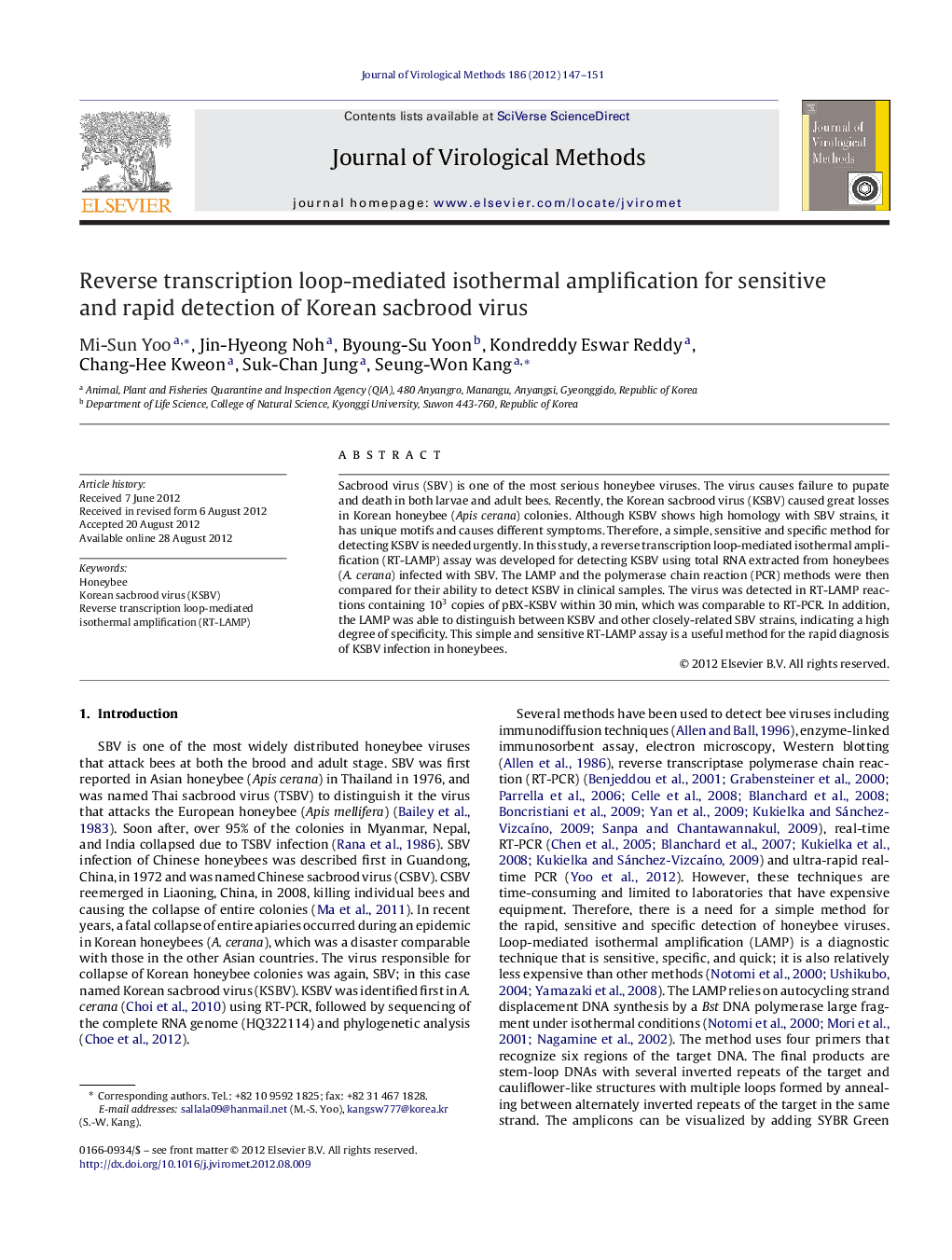| Article ID | Journal | Published Year | Pages | File Type |
|---|---|---|---|---|
| 6134781 | Journal of Virological Methods | 2012 | 5 Pages |
Sacbrood virus (SBV) is one of the most serious honeybee viruses. The virus causes failure to pupate and death in both larvae and adult bees. Recently, the Korean sacbrood virus (KSBV) caused great losses in Korean honeybee (Apis cerana) colonies. Although KSBV shows high homology with SBV strains, it has unique motifs and causes different symptoms. Therefore, a simple, sensitive and specific method for detecting KSBV is needed urgently. In this study, a reverse transcription loop-mediated isothermal amplification (RT-LAMP) assay was developed for detecting KSBV using total RNA extracted from honeybees (A. cerana) infected with SBV. The LAMP and the polymerase chain reaction (PCR) methods were then compared for their ability to detect KSBV in clinical samples. The virus was detected in RT-LAMP reactions containing 103 copies of pBX-KSBV within 30Â min, which was comparable to RT-PCR. In addition, the LAMP was able to distinguish between KSBV and other closely-related SBV strains, indicating a high degree of specificity. This simple and sensitive RT-LAMP assay is a useful method for the rapid diagnosis of KSBV infection in honeybees.
⺠The development of the simple detection method for KSBV in the field is described. ⺠KSBV was detected under isothermal condition within 30 min. ⺠The result was confirmed immediately using a fluorescent dye in daylight. ⺠LAMP does not require extensive facilities and is relatively simple to perform in the field.
